Innovation by Gino Sarfatti: The three editions of model 1073
The evolution of the world famous design
During his continuous, relentless activity in design from the end of the 1930s to the early 1970s, Gino Sarfatti created and produced hundreds of lighting devices. For Sarfatti research was very important to innovation and to learn more about the relation between light and space.
-
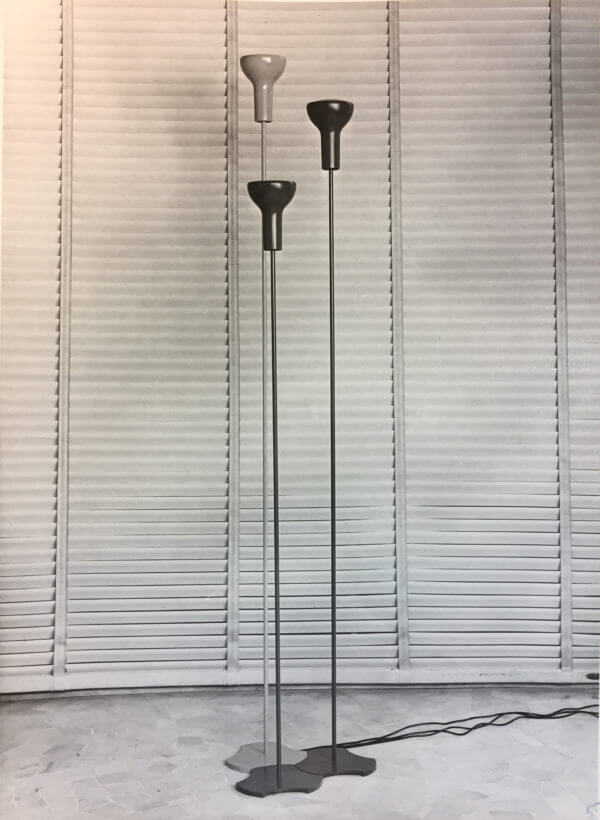 Original publicity picture of the hard-to-find model 1073, easy to recognize by the separate electrical cables and the absence of a socket on the top of the bases (from the Palainco archive).
Original publicity picture of the hard-to-find model 1073, easy to recognize by the separate electrical cables and the absence of a socket on the top of the bases (from the Palainco archive).
-
Floor Lamp model 1073 is one of our many favourites created by Sarfatti. It certainly was one of the longest-running lamps that he designed. It stayed in the Arteluce catalogue from 1956 to 1974, thanks to updated versions with slightly different names. In this article, we would like to show you the similarities and differences between the three versions: 1073, 1073/3 and 1073/n.
-
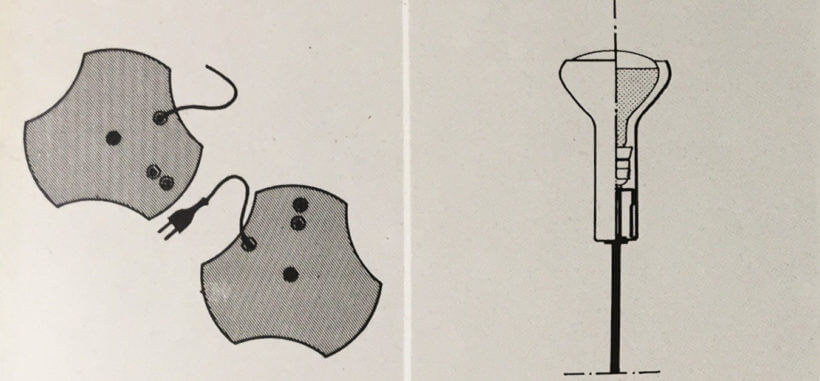 The patented concept developed to connect different lamps and a cross-section of the reflector (source: Arteluce catalogue AL Milano, from the Palainco archive).
The patented concept developed to connect different lamps and a cross-section of the reflector (source: Arteluce catalogue AL Milano, from the Palainco archive).
-
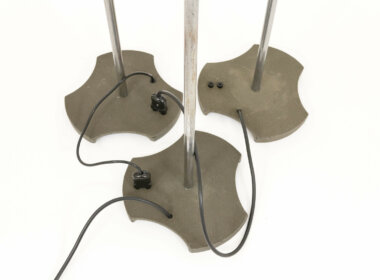 The base of model 1073/3 (Source: Palainco).
The base of model 1073/3 (Source: Palainco).
Perhaps the most characteristic part of the lamp is the base. The lamp, or better, the lamps are designed to fit into each other like pieces of a puzzle through a special, patented concept of aggregate bases.
-
Nowadays the original model, 1073, is very rare. In their standard work on Gino Sarfatti (Gino Sarfatti – opere scelte 1938-1973), Marco Romanelli and Sandra Severi describe one of the most important differences between model 1073 and its successor 1073/3. The base of model 1073 was made of “cast iron lacquered grey or black with independent electric cables.” “In the next version, 1073/3, the bases, in crackle black painted cast iron, are still electrified individually, but supply the plug for the following stem and the socket for the previous one (the wall is reached by a single cable).”
-
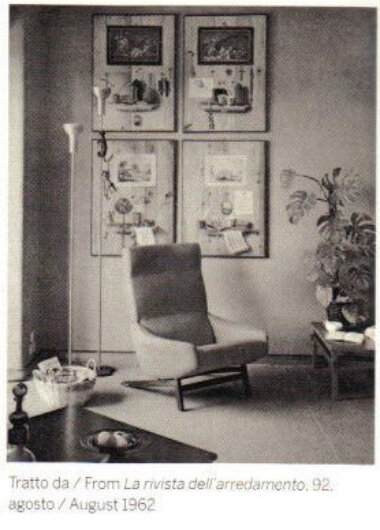 Two interiors from 1962 in which our favourite lamps have been used, as published by La rivista dell'arredemento. No. 1073 in the image above and No. 1073/3 in the image on the right.
Two interiors from 1962 in which our favourite lamps have been used, as published by La rivista dell'arredemento. No. 1073 in the image above and No. 1073/3 in the image on the right.
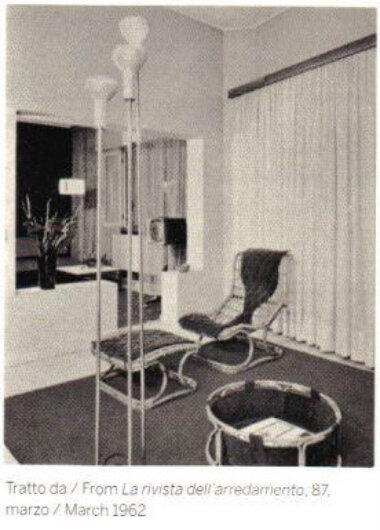 (source both pictures: Marco Romanelli & Sandra Severi “Gino Sarfatti – opere scelte 1938-1973”).
(source both pictures: Marco Romanelli & Sandra Severi “Gino Sarfatti – opere scelte 1938-1973”).
-
On each and every picture we found the floor lamp had an extra socket in the base, which offered the possibility to connect one lamp with another. Fortunately we came across an extremely nice collection of original publicity photos of Arteluce from the 1960s and early 1970s. One of the photos shows the first edition of the lamp (see above, second photo in this article); there are no sockets on top of the bases and each individual lamp has a separate electric cable.
It is not too hard to imagine why the successor of 1073, 1073/3, was more successful than the original design. Not many homes offer three different sockets in the same place of the house, and obviously it is not very elegant having three different long electrical cables lying on the floor. Furthermore, it is of course more convenient to use only one power switch instead of three.
-
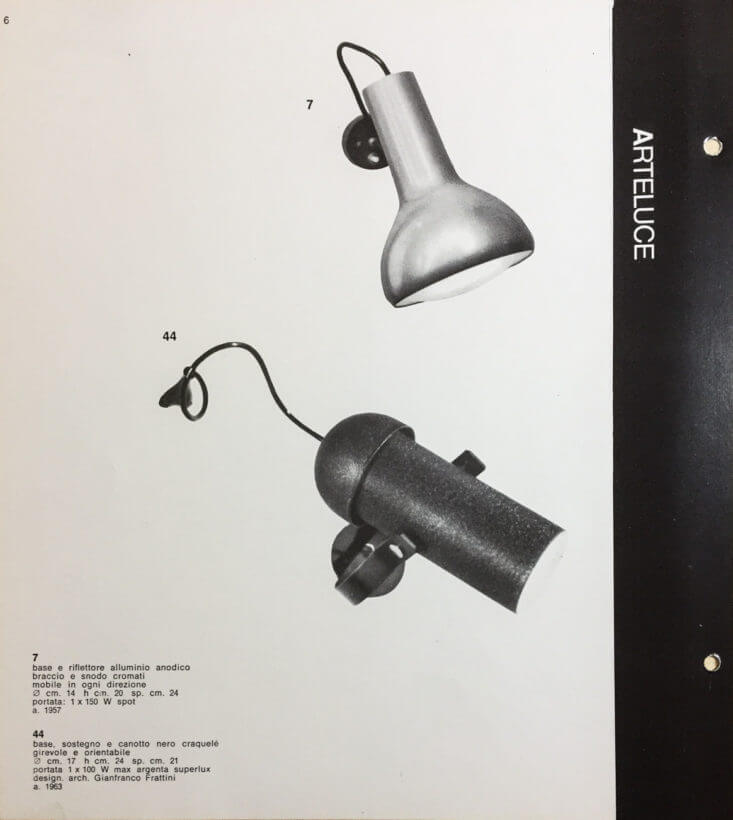 Page from Arteluce catalogue No. 1 containing wall lamp model 7 which was used a base for the reflector of 1073 (from the Palainco archive).
Page from Arteluce catalogue No. 1 containing wall lamp model 7 which was used a base for the reflector of 1073 (from the Palainco archive).
-
According to Romanelli and Severi, Wall Lamp model 7 has been used as a reflector. Comparing model 7 with the reflector of 1073/3, it shows that they are similar, but certainly not identical. The curve of the shape of the wall lamp is smoother and the cylindrical part is shorter than the corresponding part of the reflector of 1073/3.
The difference between 1073 and its successor also becomes apparent in the material that was used for the reflector. While the reflector of model 1073 is made of grey or black painted aluminium, the reflector of the newer edition, 1073/3, is either anodised aluminium or brass.
-
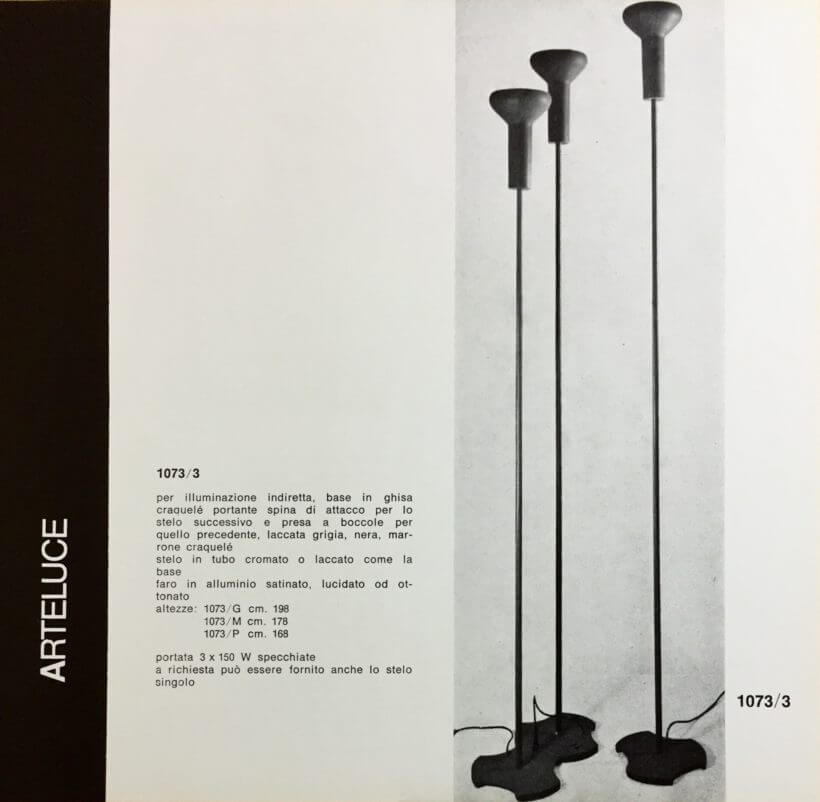 Model 1073/3 as presented in a catalogue from the 1960s (source: Arteluce Catalogue No. 2, from the Palainco archive).
Model 1073/3 as presented in a catalogue from the 1960s (source: Arteluce Catalogue No. 2, from the Palainco archive).
-
 Gino Sarfatti with one of his many innovative creations (source: Flos).
Gino Sarfatti with one of his many innovative creations (source: Flos).
Gino Sarfatti was always innovating and he even tried to improve products that were already very successful. Or like the British design critic Alice Rawsthorn wrote in the international edition of The New York Times (October 2012): “Sarfatti experimented continuously with new types of light sources, wiring, switches, reflectors, transformers and other components to refine his designs.” and “He believed that a product’s design should be determined by its function, and that the designer and manufacturer shared a duty to exploit any advances in technology to that end. He always strove to make his lights slimmer, lighter, stronger, more flexible, faster to manufacture (and therefore cheaper) and easier to disassemble for repairs and maintenance.”
-
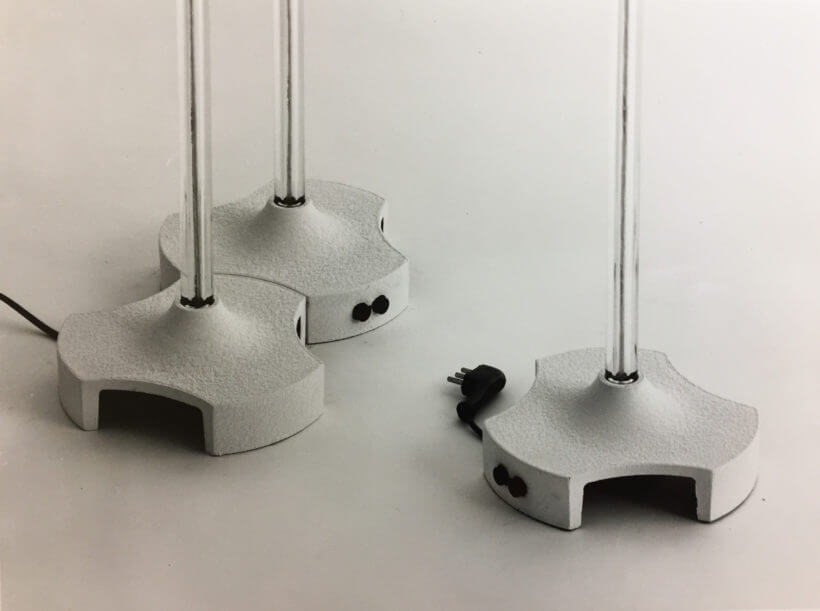 The strongly adapted base with the socket on the side used in 1073/n (source: Arteluce catalogue AL Milano, from the Palainco archive).
The strongly adapted base with the socket on the side used in 1073/n (source: Arteluce catalogue AL Milano, from the Palainco archive).
-
In the case of 1073/3, Sarfatti apparently was not completely satisfied with the fact that the sockets, which made it possible to connect the lamps, sat on top of the base. Therefore, he designed a new base for the third edition of the lamp, 1073/n, where the socket sat on the side of the base. Arguably better, but it this also led to a higher base. The changed shape of the base combined with usage of white or black crackle lacquer finish makes it really easy to distinguish 1073/n from the earlier two versions.
-
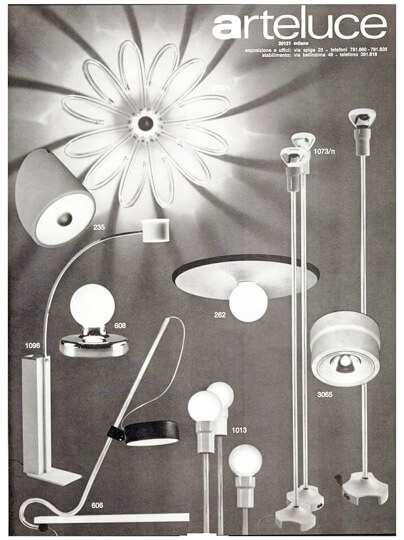 The third and final version of the floor lamp presented in an advertisement of Arteluce (source: Arteluce advertisement 1971, from the Palainco archive).
The third and final version of the floor lamp presented in an advertisement of Arteluce (source: Arteluce advertisement 1971, from the Palainco archive).
-
But this is not the only big change in the design. As described in Domus No. 499 (July 1971) Sarfatti integrated “the idea of replacing the metal tube, in the supporting elements, with clear methacrylate” in the third and last version of 1971.
-
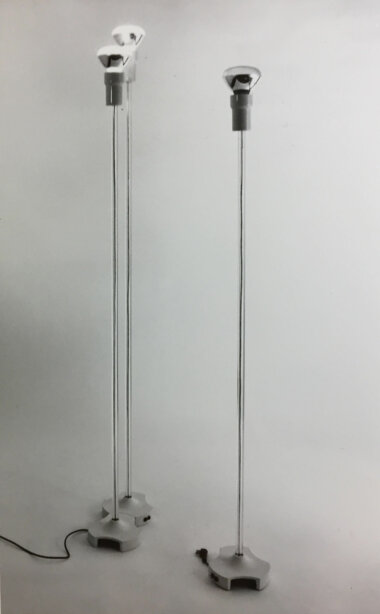 Original publicity picture by Arteluce from 1971 (from the Palainco archive).
Original publicity picture by Arteluce from 1971 (from the Palainco archive).
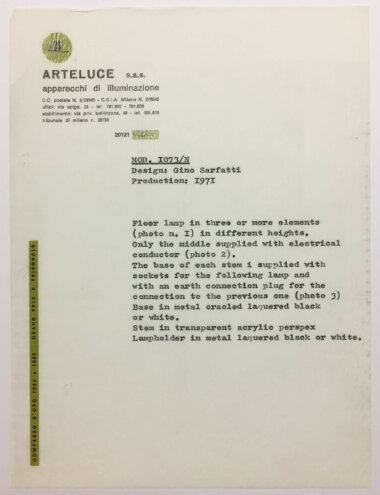 Attached original description of model 1073/n (from the Palainco archive).
Attached original description of model 1073/n (from the Palainco archive).
-
Sarfatti also replaced the reflector with white painted aluminium sockets fitted with visible mirrored spots. And the last easily identifiable difference between the third generation and the previous two is the height of the lamps. The three different versions of models 1073 and 1073/3 were available in 207, 198 and 183 cm and the heights of the next versions of the floor lamp were 180, 170 and 160 cm.
In other words, model 1073/n is a big step in comparison with the previous two versions. In fact, the step is so enormous that Sarfatti easily could have given 1073/n a completely new numerical code, his way to identify each different model.
If you would like to be the first to read articles on designers and special designs, please subscribe to our newsletter.
-
- Literature: Marco Romanelli & Sandra Severi “Gino Sarfatti – opere scelte 1938-1973”, Alice Rawsthorn, New York Times, Domus No. 499 (July 1971).
Unless otherwise stated, all material is sourced and/or generated internally. All rights reserved.
- Text: Palainco, Koos Logger & Ingrid Stadler.
- Image sources: Palainco, Arteluce - Catalogue AL Milano, Arteluce - Catalogue No. 01, Arteluce - Catalogue No. 02, Marco Romanelli & Sandra Severi “Gino Sarfatti – opere scelte 1938-1973”, Flos & the Palainco Archive.
The article and its contents may not be copied or reproduced in any part or form without the prior written permission of the copyright holders.
Published on: 20 April 2017